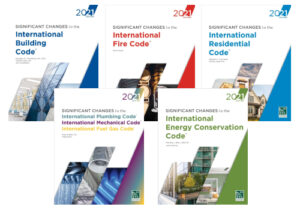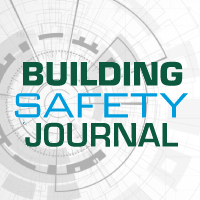
Significant changes to occupied roof allowances in the 2021 International Building Code
A clarification to Section 503.1.4 (Occupied Roof Allowances) in the 2021 International Building Code states that the proper approach to dealing with occupied roofs from the perspectives of building height, number of stories and installation of occupant notification features has been further clarified for a more consistent application of the code’s intent.
The allowable building height in stories as limited by Table 504.4 is based on a combination of factors. A primary consideration is the building’s type of construction, consistent with the application of Table 504.3 for allowable building height in feet. However, a significant difference between the two tables is the impact of the building’s use on its maximum allowable height. The limits on stories above grade plane set forth in Table 504.4 vary widely based on the building’s occupancy classification(s). New criteria were added to the 2018 IBC in order to establish the appropriate methodology for the determination of the allowable number of stories where one or more occupancies are located on the roof of the building. The proper approach to dealing with occupied roofs from an allowable height and an allowable number of stories perspective have been further clarified for a more consistent application of the code’s intent.
The provisions now specifically state that in the determination of a building’s allowable height and number of stories, an occupied roof is not to be considered as an additional story. In addition, it has also been clarified that compliance with Section 1511 for penthouses and other enclosed roof structures is necessary. The base requirement for allowing a roof level to be occupied remains unchanged, as the occupancy of the roof is limited to only those occupancies permitted by Table 504.4 to be located on the story directly below the roof. Only where the conditions of Exception 1 are met is an occupancy not in compliance with the base requirement allowed to be located on the roof.
An additional clarification addresses the conditions of Exception 1 recognizing there is no story limitation to be applied on rooftop occupancies where specified fire protection features are provided. In the application of the exception, the building must be provided with an automatic sprinkler system. In addition, occupant notification shall be extended to the occupiable area of the roof where a fire alarm system is required. The new provisions specifically reference Sections 907.5.2.1, 907.5.2.2 and 905.5.2.3 addressing audible alarms, emergency voice/alarm communication systems and visual alarms, respectively. However, due to the absence of scoping language mandating a fire alarm system be installed, occupant notification at the roof level is only applicable where an alarm system is already required elsewhere in the building.
Read the full significant change.
 The 2021 Significant Changes guides are available for the International Building, Fire, Residential, Energy Conservation, Plumbing, Mechanical and Fuel Gas Codes. This valuable series can help any code user save time by zeroing in on the most critical changes in the 2021 International Codes. The Code Council’s technical experts provide summaries, analysis and graphics for these changes making them clear and easy to understand. Each edition provides a comprehensive analysis of significant changes since the 2018 edition, offering key insights into its contents and implications. Each change analysis features the affected code sections and identifies the change with strikethroughs and underlines to show modifications to the existing language. Each change is accompanied by a quick summary, detailed illustrations, and a discussion of its significance, which brings the technical jargon of the code to life in a real-world setting.
The 2021 Significant Changes guides are available for the International Building, Fire, Residential, Energy Conservation, Plumbing, Mechanical and Fuel Gas Codes. This valuable series can help any code user save time by zeroing in on the most critical changes in the 2021 International Codes. The Code Council’s technical experts provide summaries, analysis and graphics for these changes making them clear and easy to understand. Each edition provides a comprehensive analysis of significant changes since the 2018 edition, offering key insights into its contents and implications. Each change analysis features the affected code sections and identifies the change with strikethroughs and underlines to show modifications to the existing language. Each change is accompanied by a quick summary, detailed illustrations, and a discussion of its significance, which brings the technical jargon of the code to life in a real-world setting.
Significant Changes to the International Building Code, 2021 Edition is available in the ICC Store or through Digital Codes Premium.








